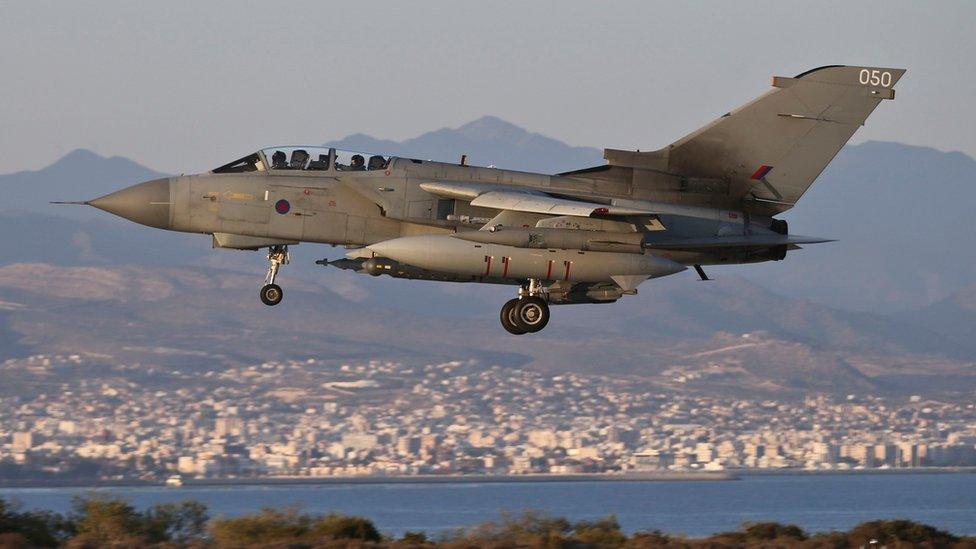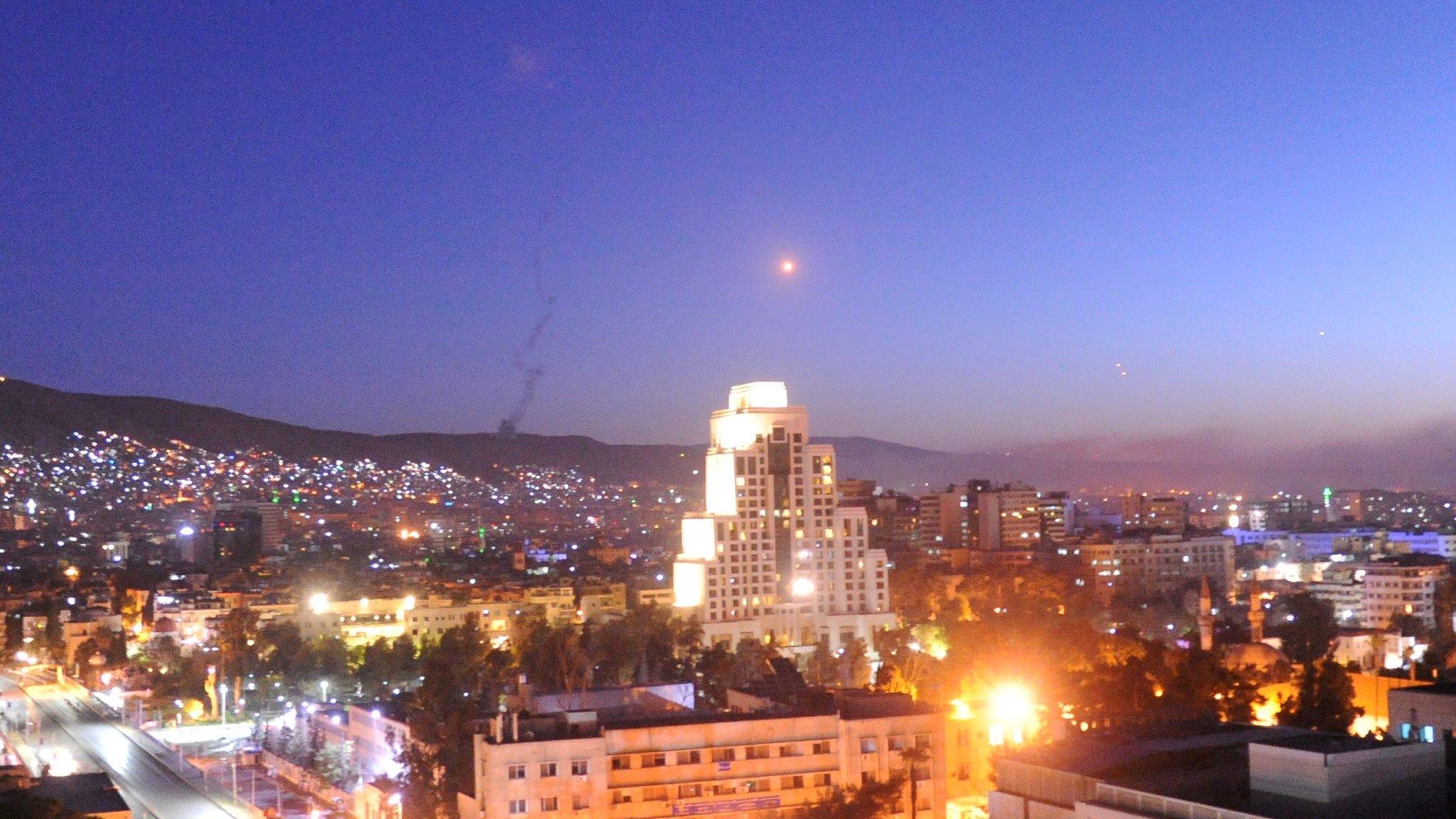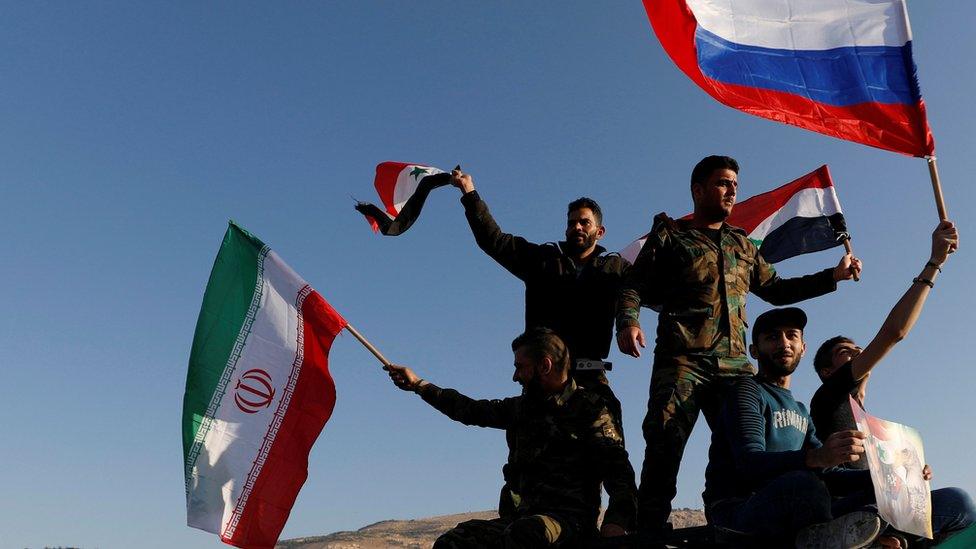Syria air strikes: RAF used 'fire and forget' missiles to minimise risk
- Published

An RAF Tornado returns to its Cyprus base in 2014
The RAF crews involved in the overnight strikes on a Syrian chemical weapons target were well prepared for this operation.
For the past three years they've regularly been carrying out bombing missions against the group known as Islamic State in both Iraq and Syria. For that they've been able to fly directly over targets in uncontested airspace dropping Paveway bombs or firing their smaller Brimstone missiles.
But this time there were greater risks. Unlike IS, both the Syrian regime and its ally Russia have sophisticated air defences. If the RAF Tornados flew directly over their target there was the added danger they'd become a target too.
That's why they used their Stormshadow cruise missiles. These "fire and forget" weapons can be pre-programmed. They use GPS mapping to find their target and have a range of up to 300 miles. The RAF Tornados which can carry two Stormshadows could stay well clear of any threat.
The Stormshadow was first used in anger during the Iraq invasion in 2003. More recently it's been fired during the campaign to remove Libya's Colonel Gaddafi and on a rare occasion against IS too.
The cruise missile is 5m long, weighs 1300kg and flies at speeds up to 1000km/h.
It's difficult to shoot down. Once fired from the Tornado it would have flown low. When close to the target it climbs before making a final dive to penetrate its target before setting off the main warhead.
In the past, the Stormshadow has been used to hit hardened targets such as concrete bunkers.
The target this time was a chemical weapons facility 15 miles west of Homs. The Ministry of Defence says it believes the Assad regime had been using the former missiles base to store the precursors to make chemical weapons.
Both Defence Secretary Gavin Williamson and the prime minister say they believe the strike was a "success", although it'll take time to analyse satellite imagery to make the final Battle Damage Assessment.
In terms of the quantity of missiles, the eight fired by Britain was well behind the US and France.
But these strikes were not just a show of force. They were a a show of solidarity with allies trying to make a stand against the use of chemical weapons.
- Published14 April 2018

- Published14 April 2018

- Published14 April 2018